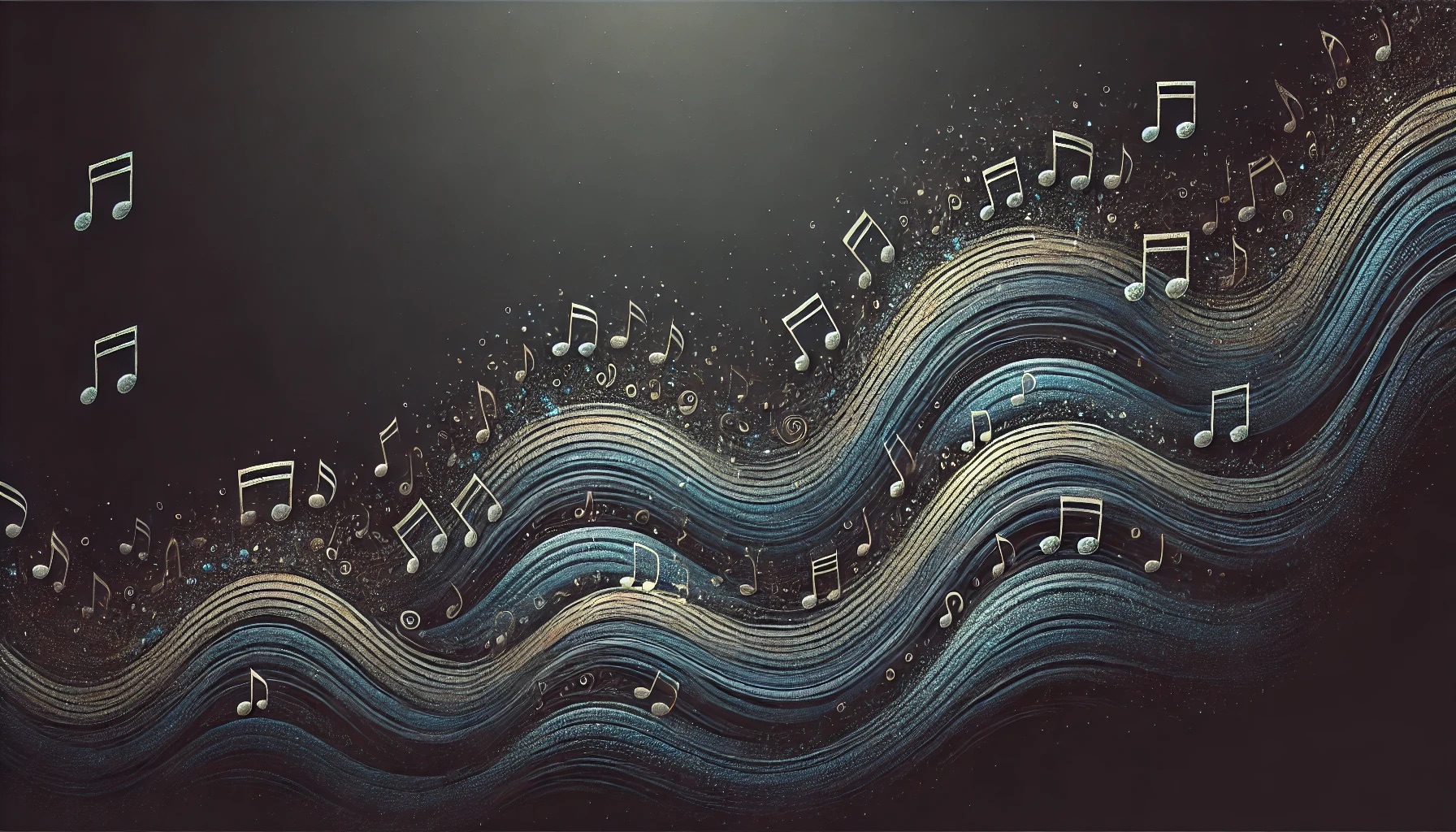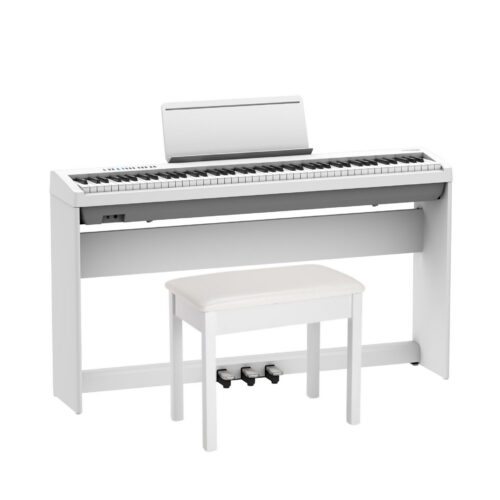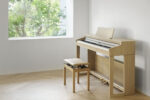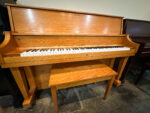Anyone who has ever seen a piano, acoustic or digital, knows that there are usually three foot pedals on any given piano. But their specific use can be a source of great confusion, especially because they tend to vary from acoustic to digital and from model to model.
On an acoustic piano, there are always three pedals:
1. Right Pedal: Sustain or Damper Pedal
The sustain pedal, or the damper pedal, serves to extend the sound of the notes you are playing. Whatever notes you are playing at the time you press the sustain pedal will be held out and reverberate until you let up on the pedal. The sustain pedal is not meant to be held down for the duration of a song, but rather pressed up and released in time with the various phases of the music—a technique that is taught early on in piano lessons.
2. Middle Pedal: Bass Sustain, Mute Pedal or Sostenuto
The function of the middle pedal on acoustic pianos varies depending on whether the piano is a grand or an upright.
On most grand pianos, the middle pedal is what is known as the sostenuto pedal, which is a variation on the sustain pedal. Occasionally a professional upright piano may have a sostenuto pedal but this is rare. When you press the sostenuto, whatever notes you played will be sustained, and any notes layered on top of that will not be sustained. Only a few classical pieces call for the use of the sostenuto.
On upright pianos, the middle pedal either functions as a sustain pedal specifically for bass notes or, for uprights out of Europe and Asia, a “mute” pedal. Pressing the mute pedal and moving it to the left causes a felt strip to lower itself between the hammers and the strings inside of the piano and make all of the notes extremely quiet and muted. This function is mostly for practice purposes.
3. Left Pedal: Soft Pedal
The soft pedal does what the name implies. Any notes that you play as you hold down the soft pedal will be softened and more modest in expression. This pedal can be used for specific phrases of a song and then released when not needed.
On digital pianos, there are usually three but sometimes two or even one pedal, and the uses vary. There is always a sustain function, but depending on the elaborateness of the digital piano and the various sounds that are sampled for it, the pedals can serve many different functions. Digital piano owners should consult their user manual or a professional like Miller Piano Specialists for help making the most out of their digital piano pedals.
Learn More
There’s a great article on the Yamaha site that explains the differences between a Grand and an Upright Piano which also has information about the difference in pedals. Take a moment to read it as well.
For more information or for help selecting a piano for your home, studio, or educational institution, call Miller Piano Specialists at (615) 771-0020 or visit our website at millerps.com.










